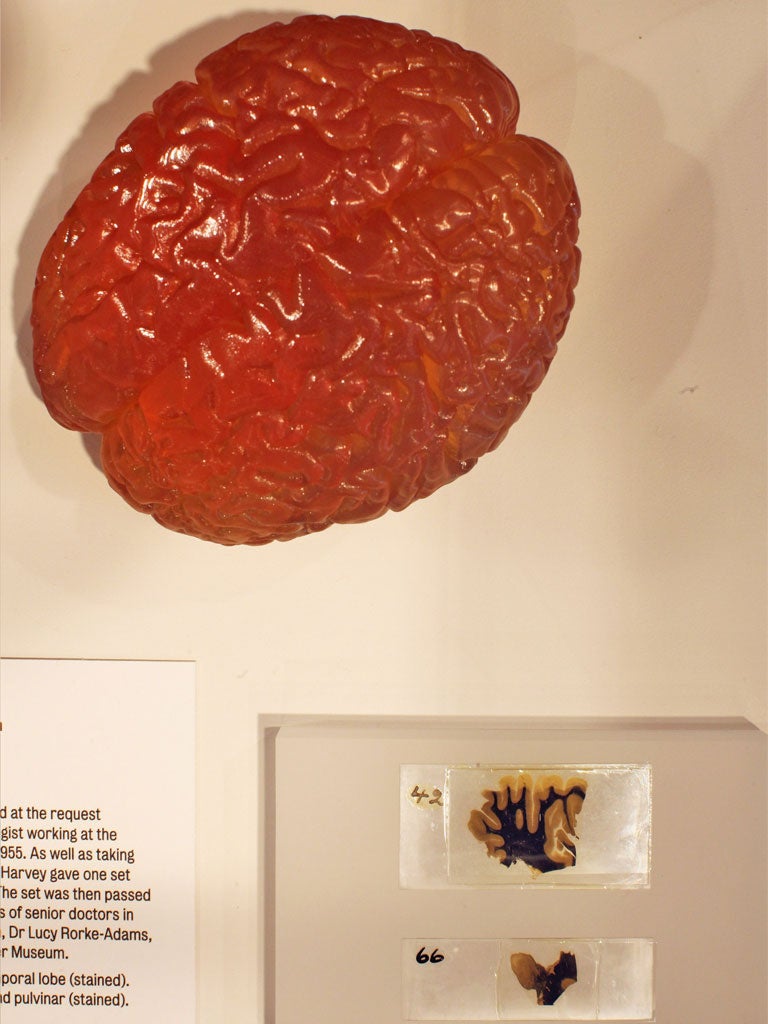Brush with genius: Einstein's brain cells go on show

Your support helps us to tell the story
From reproductive rights to climate change to Big Tech, The Independent is on the ground when the story is developing. Whether it's investigating the financials of Elon Musk's pro-Trump PAC or producing our latest documentary, 'The A Word', which shines a light on the American women fighting for reproductive rights, we know how important it is to parse out the facts from the messaging.
At such a critical moment in US history, we need reporters on the ground. Your donation allows us to keep sending journalists to speak to both sides of the story.
The Independent is trusted by Americans across the entire political spectrum. And unlike many other quality news outlets, we choose not to lock Americans out of our reporting and analysis with paywalls. We believe quality journalism should be available to everyone, paid for by those who can afford it.
Your support makes all the difference.Part of the brain of Albert Einstein, the scientist considered one the most striking intellects in human history, is going on display for the first time in the UK.
Following his death at the age of 76 in 1955, Einstein's brain was divided into sections, two of which are going on show at the Wellcome Collection. Brains: The Mind As Matter will also feature the brain of US suffragette Helen H Gardener, which she donated to science to disprove theories about gender.
The two sections from Einstein's brain are on loan from the Mutter Museum in Philadelphia, where they were only shown publicly in the US for the first time last year. The eminent scientist was cremated and his ashes were scattered according to his wishes.
But pathologist Thomas Harvey, who carried out the post-mortem examination, said that Einstein's son gave him permission to preserve the brain for research, a claim which was later disputed. He kept the brain, which to many people's surprise was not particularly large, and divided it into 240 sections preserved in jars of formaldehyde at his house.
He gave a box of 46 slides to his pathologist colleague William Ehrich, and the samples were eventually donated to the museum in Philadelphia.
Join our commenting forum
Join thought-provoking conversations, follow other Independent readers and see their replies
Comments